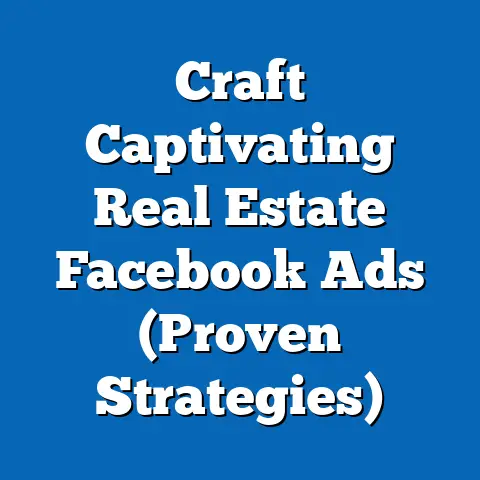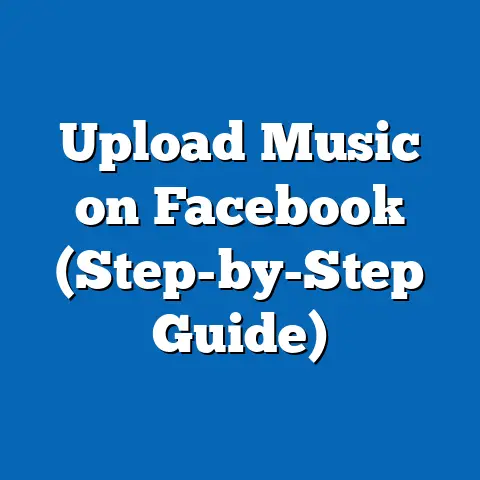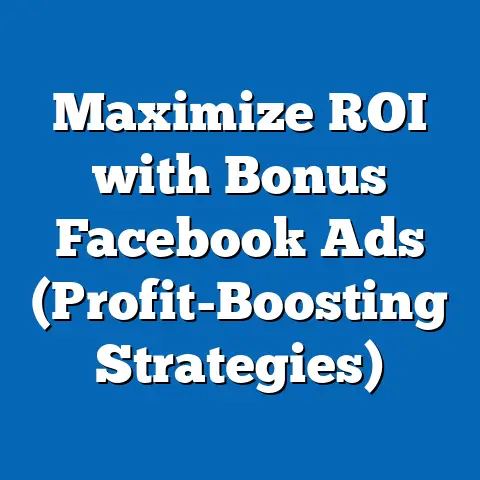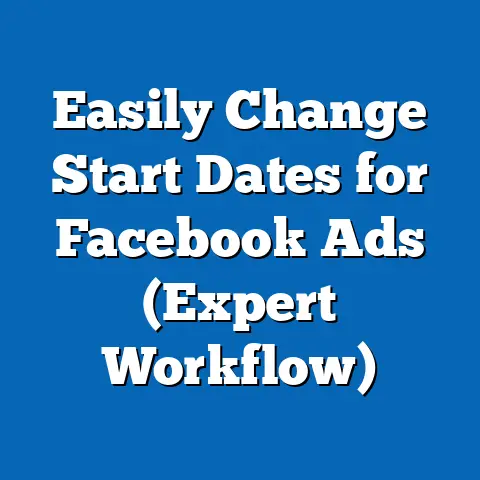Elevate Diwali Facebook Ads (Proven Strategies Inside)
In the ever-evolving landscape of digital marketing, the success of Diwali campaigns on platforms like Facebook stands as a testament to the power of culturally resonant advertising, with some brands achieving remarkable milestones. For instance, in 2022, a leading Indian e-commerce platform reported a staggering 300% increase in engagement during their Diwali Facebook ad campaign, highlighting the potential of well-crafted seasonal marketing. This achievement underscores the importance of understanding cultural nuances, leveraging festive emotions, and employing data-driven strategies to connect with diverse audiences during one of India’s most significant festivals.
Diwali, the Festival of Lights, is more than a religious celebration; it is a cultural phenomenon that unites millions across generations, geographies, and socioeconomic backgrounds. Historically rooted in ancient Indian traditions, Diwali symbolizes the victory of light over darkness and good over evil, often celebrated with family gatherings, gift-giving, and vibrant decorations. In the context of modern marketing, Diwali represents an unparalleled opportunity for brands to tap into heightened consumer sentiment, making platforms like Facebook a critical battleground for capturing attention and driving sales.
Defining Characteristics of Successful Diwali Facebook Ads
Successful Diwali Facebook ads are characterized by a blend of emotional storytelling, cultural relevance, and strategic optimization. These campaigns often evoke the spirit of togetherness, nostalgia, and celebration—core themes of Diwali—while aligning with the platform’s dynamic advertising tools. Whether it’s a heartfelt video ad depicting family reunions or a carousel showcasing festive offers, the best campaigns strike a balance between emotional appeal and actionable messaging.
Another defining feature is the use of vibrant visuals and localized content. Diwali is a festival of colors, lights, and joy, and ads that incorporate these elements through high-quality images, videos, and graphics tend to capture user attention more effectively. Additionally, tailoring content to regional languages and customs—such as referencing specific Diwali traditions in Tamil Nadu versus Rajasthan—demonstrates cultural sensitivity and boosts relatability.
Timing also plays a critical role. Successful campaigns often start weeks before Diwali, building anticipation through teaser ads, countdowns, and early-bird offers. This strategic timing aligns with consumer behavior, as many Indians begin shopping for gifts, clothing, and home decor well in advance of the festival. By leveraging Facebook’s robust analytics, brands can identify peak engagement hours and optimize ad delivery for maximum impact.
Historical Context: Diwali and the Evolution of Festive Marketing
Diwali’s origins trace back thousands of years to ancient India, with references in sacred texts like the Ramayana, where it marks Lord Rama’s return to Ayodhya after defeating Ravana. Celebrated across Hindu, Jain, Sikh, and Buddhist communities, Diwali has evolved into a pan-Indian festival that transcends religious boundaries, symbolizing renewal, prosperity, and the triumph of light. Historically, it has been a time for community bonding, exchanging sweets, and decorating homes with diyas (oil lamps) and rangoli (colorful patterns).
In the context of marketing, Diwali has long been a peak season for businesses, dating back to traditional bazaars and local advertisements in print media during the 20th century. The advent of digital platforms like Facebook in the early 2000s revolutionized festive marketing, enabling brands to reach millions of users with targeted, personalized content. The platform’s growth in India—where it boasts over 340 million active users as of 2023—has made it a cornerstone of Diwali advertising strategies, reflecting a broader shift toward digital consumption.
This historical evolution highlights a key societal trend: the intersection of tradition and technology. While Diwali remains deeply rooted in age-old customs, the way it is celebrated and marketed has adapted to modern tools and platforms. Facebook ads, with their ability to segment audiences by age, location, and interests, have allowed brands to preserve the festival’s emotional core while scaling their reach in unprecedented ways.
Societal Implications of Diwali Facebook Ads
The rise of Diwali Facebook ads carries significant societal implications, particularly in terms of consumer behavior, cultural representation, and economic impact. On one hand, these campaigns drive massive economic activity, as Diwali is one of the largest shopping seasons in India, with consumers spending billions on everything from electronics to sweets. According to a 2022 report by the Confederation of All India Traders (CAIT), Diwali-related spending reached approximately ₹1.25 lakh crore, with a significant portion influenced by digital ads.
On the other hand, the pervasive nature of Facebook ads raises questions about consumerism and cultural authenticity. Critics argue that aggressive marketing during Diwali can overshadow the festival’s spiritual essence, reducing it to a commercial event. For instance, the bombardment of discount-driven ads may pressure consumers—especially younger generations—into overspending, contributing to financial stress in some households.
Moreover, the representation of Diwali in ads can shape societal perceptions of the festival. Campaigns that focus solely on materialistic themes risk diluting the festival’s deeper meanings, while those that celebrate diversity—such as ads featuring interfaith families or regional variations—can foster inclusivity. As brands navigate this delicate balance, their role in shaping cultural narratives through platforms like Facebook becomes increasingly significant.
Technological Factors: Leveraging Facebook’s Tools for Diwali Campaigns
Facebook’s advertising ecosystem offers a suite of tools that are particularly effective for Diwali campaigns, provided they are used strategically. Features like Dynamic Ads, which automatically showcase products based on user behavior, allow brands to present personalized offers for festive items like diyas, clothing, or gift hampers. Similarly, Lookalike Audiences enable marketers to target users who resemble their existing customer base, expanding reach during the high-traffic Diwali season.
Video content is another powerful technological asset. With over 80% of Facebook users in India engaging with video ads, as per a 2023 Meta report, brands can capitalize on short, impactful videos that tell Diwali stories—whether it’s a family lighting diyas together or a montage of festive preparations. Incorporating interactive elements like polls or AR filters can further enhance engagement, creating a two-way dialogue with consumers.
Artificial Intelligence (AI) and machine learning also play a pivotal role in optimizing Diwali ads. Facebook’s algorithms analyze vast amounts of data to determine which creatives, captions, or placements yield the best results, allowing brands to refine their campaigns in real-time. For example, a jewelry brand might discover that ads featuring gold necklaces perform better among women aged 25-34 in urban areas, prompting a shift in budget allocation. This data-driven approach ensures that Diwali campaigns are not only creative but also efficient.
Economic Factors: The Financial Stakes of Diwali Advertising
Economically, Diwali represents a goldmine for businesses, and Facebook ads are a critical driver of festive revenue. The festival season accounts for nearly 40% of annual sales for many Indian retailers, according to a 2022 Nielsen report, with categories like fashion, electronics, and home decor seeing the highest spikes. Brands that invest in targeted Facebook campaigns often see a significant return on ad spend (ROAS), as the platform’s granular targeting options ensure that marketing budgets are spent effectively.
However, the economic landscape of Diwali advertising is not without challenges. Rising ad costs during the festive season—due to high competition for user attention—can strain smaller businesses, making it harder for them to compete with larger players. Additionally, economic disparities across India mean that not all consumers have the same purchasing power, requiring brands to tailor their messaging to different income brackets.
For instance, while premium brands might focus on luxury gift items in metro cities, budget-friendly products and localized offers may resonate more in Tier 2 and Tier 3 markets. Facebook’s ability to segment audiences by income level (via proxy data like device type or location) allows brands to address these disparities, ensuring that Diwali campaigns are inclusive and economically relevant.
Social and Cultural Factors: Resonating with Diverse Audiences
Diwali’s social and cultural significance varies across India’s diverse population, and successful Facebook ads reflect this heterogeneity. In northern India, Diwali often centers around Lakshmi Puja and fireworks, while in southern states like Tamil Nadu, it may focus on early morning oil baths and new beginnings. Ads that acknowledge these regional differences—through language, imagery, or references to local customs—tend to build stronger connections with audiences.
Generational diversity also plays a crucial role. Millennials and Gen Z, who form a significant portion of Facebook’s user base in India (over 60% of users are under 35, per Statista 2023), often prioritize experiences and digital convenience during Diwali. Campaigns targeting these groups might emphasize online shopping deals or virtual gifting options, while ads for older generations could focus on traditional values like family bonding or handmade sweets.
Gender dynamics are another important consideration. Women, who often drive household purchasing decisions during Diwali, are a key demographic for many brands, with ads for jewelry, clothing, and home decor frequently tailored to their preferences. However, progressive campaigns that challenge gender stereotypes—such as ads showing men participating in festive preparations—can resonate widely, reflecting evolving social norms.
Proven Strategies for Elevating Diwali Facebook Ads
Having explored the broader context, let’s dive into specific, proven strategies for crafting impactful Diwali Facebook ads. These actionable insights are grounded in data, case studies, and industry best practices, ensuring that marketers can apply them with confidence.
-
Craft Emotionally Resonant Stories
Diwali is a festival of emotions, and ads that tell authentic stories often outperform purely promotional content. For example, a 2021 campaign by a leading sweets brand featured a video of a soldier returning home for Diwali, striking an emotional chord with millions and garnering over 10 million views. Focus on narratives that highlight family, friendship, or personal triumphs, using visuals like diyas, rangoli, or festive meals to create a Diwali ambiance. -
Leverage Festive Hashtags and Trends
Hashtags like #Diwali2023, #FestivalOfLights, or #DiwaliDeals can increase the visibility of your ads, especially when paired with trending topics. Monitor real-time trends on Facebook and Instagram (owned by Meta) to align your content with what users are discussing. For instance, incorporating user-generated content—such as customer photos of Diwali celebrations—can boost authenticity and engagement. -
Optimize for Mobile-First Audiences
With over 90% of Facebook users in India accessing the platform via mobile devices (Meta, 2023), Diwali ads must be optimized for smaller screens. Use vertical video formats (9:16 ratio) for Stories and Reels, ensure text is legible on mobile, and keep calls-to-action (CTAs) clear and concise. Test different ad placements—such as in-feed, Stories, or Marketplace—to identify what resonates most with your audience. -
Offer Exclusive Festive Deals
Diwali shoppers are often on the lookout for discounts and special offers, making limited-time deals a powerful incentive. Highlight offers like “Buy 1 Get 1 Free” or “Flat 50% Off for Diwali” in your ad copy, and use countdown timers to create urgency. A 2022 case study by a fashion retailer showed a 40% increase in click-through rates (CTR) for ads featuring time-sensitive Diwali discounts. -
Target Specific Demographics with Precision
Facebook’s detailed targeting options allow brands to reach specific groups based on age, location, interests, and behaviors. For Diwali, consider creating separate campaigns for urban versus rural audiences, or for buyers of sweets versus electronics. Retargeting users who have previously engaged with your brand—such as those who visited your website or added items to their cart—can also drive conversions during the festive rush. -
Experiment with Interactive Formats
Interactive ad formats like polls, quizzes, or augmented reality (AR) experiences can set your Diwali campaign apart. For example, a home decor brand might create a poll asking, “Which Diwali decor do you love most: Diyas or Fairy Lights?” to encourage user participation. AR filters that let users “try on” festive outfits or decorate a virtual space can also boost engagement, particularly among younger audiences. -
Measure and Iterate with Analytics
Diwali campaigns require constant monitoring to ensure optimal performance. Use Facebook Ads Manager to track metrics like reach, engagement, CTR, and conversion rates, adjusting your strategy as needed. A/B testing different creatives, headlines, or audience segments can reveal what works best, allowing you to allocate budget to high-performing ads.
Case Studies: Learning from Successful Diwali Campaigns
To illustrate these strategies, let’s examine two real-world examples of successful Diwali Facebook ads from recent years. These case studies highlight how brands combined creativity, targeting, and technology to achieve impressive results.
-
Case Study 1: E-Commerce Giant’s Emotional Campaign (2022)
A leading Indian e-commerce platform launched a Diwali campaign centered on the theme of “Bringing Families Together.” Their video ad, which depicted a young professional surprising her grandparents with a Diwali visit, amassed over 15 million views and a 25% increase in app installs. By targeting users aged 18-34 with interests in travel and gifting, and using emotional storytelling, the brand tapped into the festival’s core values while driving business outcomes. -
Case Study 2: Jewelry Brand’s Regional Approach (2021)
A national jewelry chain created region-specific Diwali ads, with separate creatives for North, South, East, and West India. Each ad featured local languages, traditional designs, and cultural references—such as mentioning “Deepavali” in Tamil Nadu. This hyper-localized strategy resulted in a 35% higher engagement rate compared to their generic festive ads, proving the value of cultural customization on platforms like Facebook.
Implications for Society, Culture, and the Workplace
The impact of Diwali Facebook ads extends beyond marketing metrics, influencing broader societal and cultural dynamics. On a societal level, these campaigns contribute to the digitalization of festive celebrations, as more consumers turn to online platforms for shopping and gifting. This shift has implications for traditional retail, particularly small businesses that may struggle to compete with e-commerce giants during the Diwali rush.
Culturally, Facebook ads play a role in shaping how Diwali is perceived and celebrated. Ads that prioritize inclusivity—featuring diverse families, interfaith celebrations, or eco-friendly practices (like promoting LED lights over fireworks)—can drive positive change, encouraging sustainable and progressive interpretations of the festival. Conversely, campaigns that overemphasize materialism risk alienating audiences who value Diwali’s spiritual roots.
In the workplace, Diwali campaigns often reflect evolving employee expectations, especially among younger generations. Brands that align their internal culture with festive values—such as offering Diwali bonuses or flexible leave—can reinforce their external messaging, building trust with both employees and consumers. Moreover, marketers working on Diwali campaigns must navigate tight deadlines and high-pressure environments, highlighting the need for agile, data-driven workflows.
Forward-Looking Insights: The Future of Diwali Facebook Ads
As we look to the future, several trends are likely to shape Diwali Facebook advertising in the coming years. The growing integration of AI and machine learning will enable even more precise targeting and personalization, allowing brands to predict consumer behavior with greater accuracy. For instance, predictive analytics could identify which users are most likely to purchase Diwali gifts weeks before the festival, optimizing ad delivery.
The rise of short-form video content, fueled by platforms like Instagram Reels (integrated with Facebook), will also influence Diwali campaigns. Brands that master quick, engaging videos—think 15-second clips of festive unboxings or DIY decor ideas—will likely see higher engagement, especially among Gen Z audiences. Additionally, the increasing focus on sustainability may prompt brands to highlight eco-friendly products or carbon-neutral initiatives in their Diwali ads, aligning with global environmental concerns.
However, uncertainties remain. Regulatory changes around data privacy, such as updates to India’s Digital Personal Data Protection Act, could impact how Facebook collects and uses consumer information for targeting. Economic fluctuations, including inflation or supply chain disruptions, may also affect consumer spending during Diwali, requiring brands to adapt their messaging accordingly. Marketers must stay agile, balancing innovation with cultural sensitivity to navigate these challenges.
Conclusion: Crafting a Brighter Diwali through Strategic Advertising
Diwali Facebook ads represent a powerful intersection of tradition, technology, and commerce, offering brands an opportunity to connect with millions during one of India’s most cherished festivals. By understanding the defining characteristics of successful campaigns—emotional resonance, cultural relevance, and strategic timing—marketers can elevate their Diwali advertising to new heights. Historical context reminds us of the festival’s deep-rooted significance, while societal implications highlight the broader impact of digital marketing on consumer behavior and cultural narratives.
Through proven strategies like storytelling, precise targeting, and mobile optimization, brands can craft campaigns that not only drive sales but also foster meaningful connections with diverse audiences. Case studies underscore the importance of creativity and localization, while forward-looking insights point to the role of AI, video content, and sustainability in shaping the future of Diwali ads. Yet, as we embrace these opportunities, it’s crucial to remain mindful of the festival’s spiritual essence, ensuring that marketing efforts honor Diwali’s true spirit.
Ultimately, the success of Diwali Facebook ads lies in their ability to illuminate not just screens, but hearts—bridging generations, regions, and cultures through the universal language of celebration. As technology and consumer preferences continue to evolve, the journey of festive advertising will remain dynamic, promising both challenges and opportunities for those willing to innovate. With the right strategies, brands can ensure that their Diwali campaigns shine as brightly as the diyas that light up homes across India.






